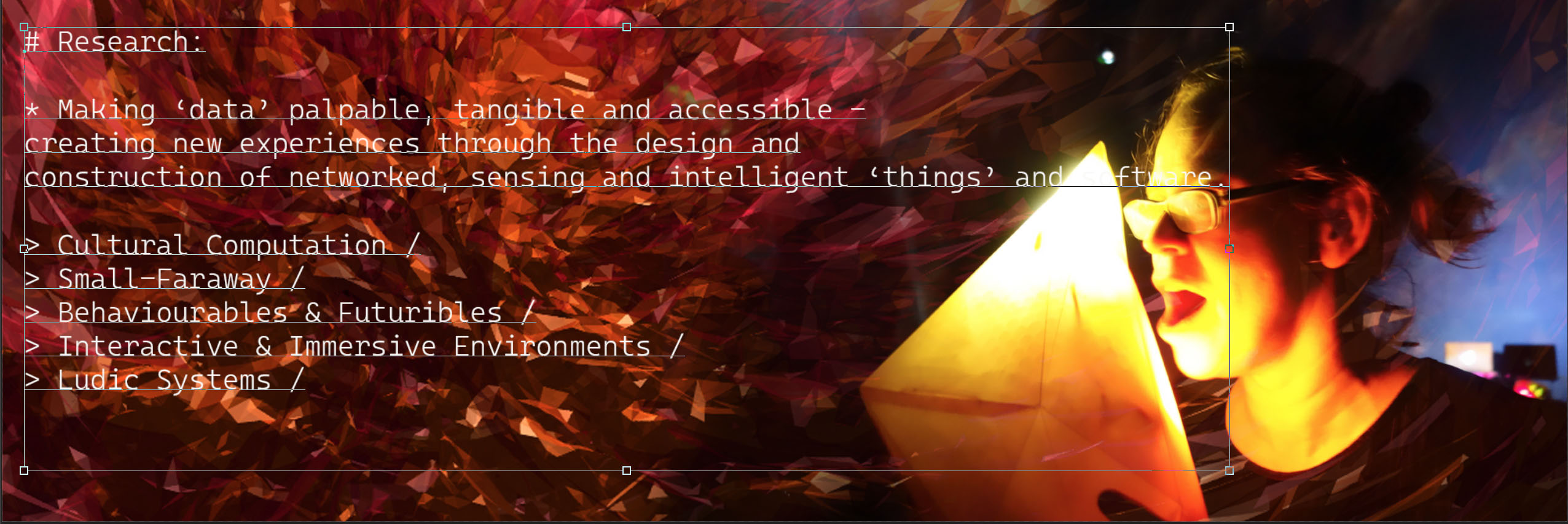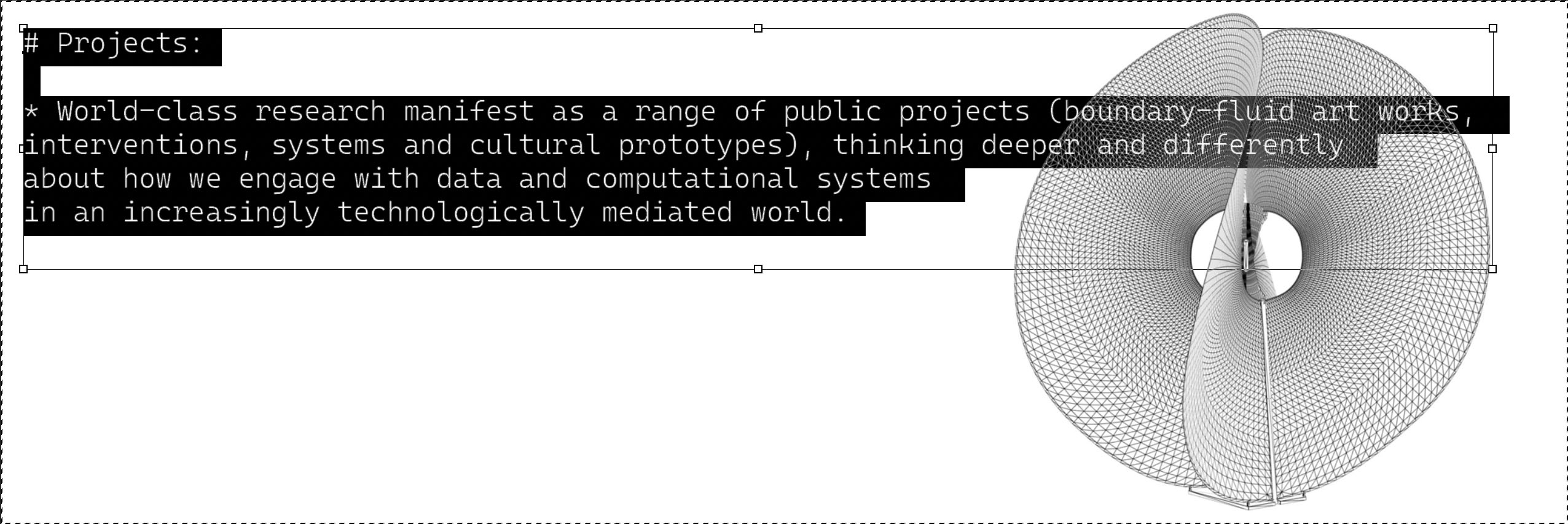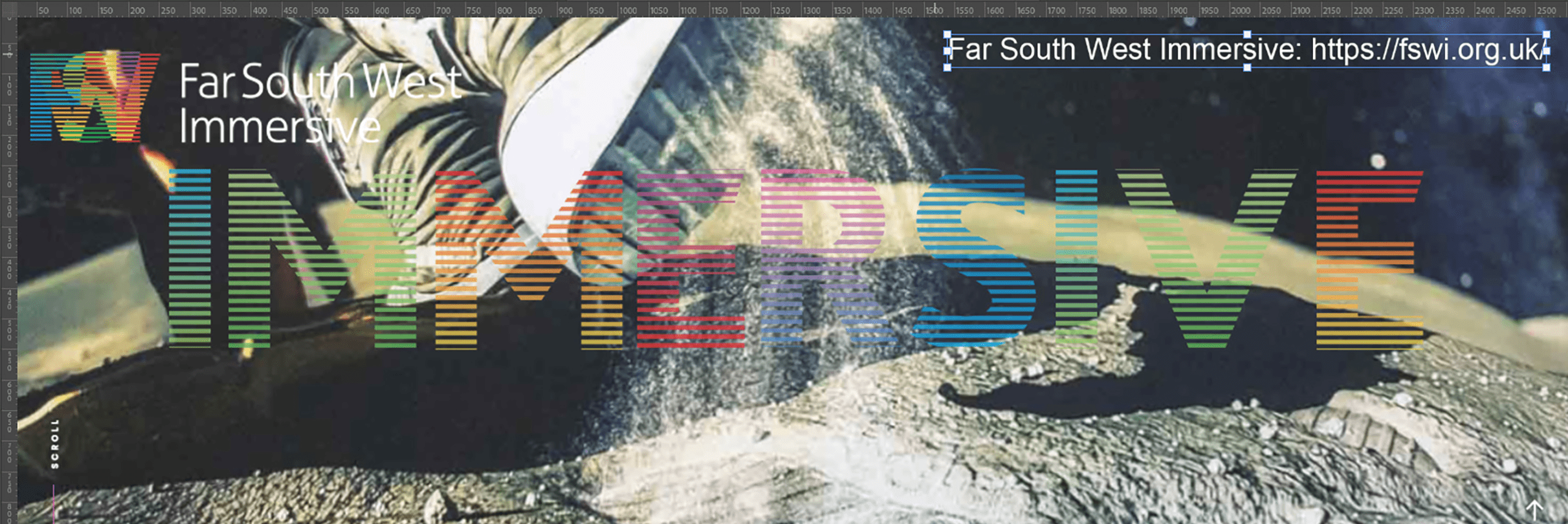
Artefacts can change their meaning not just over the years as different histriographical and institutional currents pick them out and transform their significance, but from day to day as different people view them and subject them to their own interpretation. The ‘Artefact’ Project takes this fluidity as its starting point. The Artefact and its interpretation panel slowly evolve as visitors to the website play with it and reinterpret its meaning.
At the core of the Artefact Project is a 3D database drawn from the V&A Collection. For the duration of the show the ‘Artefact’ evolves through a generative breeding of this ‘genetic’ information. At some point in its evolution the ‘Artefact’ will become the collection.
Artefact is a MODEL project: May 16th – June 9th 2002.
Corrupted images downloaded from the V&A archive during the R&D phase of the project.
Artefact digital sketches.

Artefact was a MODEL production:

An example of a MODEL project, “Artefact” can be found in the Victoria and Albert Museum and the Artefact website.
![]()
Previous MODEL collaborations include:
1: Vertex, which includes children’s avatar-building software for creating and populating 3D Virtual environments. Vertex is raising research questions about learning which enables children from different cultural and geographical locations to collaborate and exchange stories, experiences and ideas within playful virtual spaces. The Vertex project can be found on-line at: http://www.lle.mdx.ac.uk/research/projects/vw/
2: Autoicon: is funded by the Arts Council of England and inIVA. It is a dynamic Internet work composed of three distinct but integrated components. The aim of the project is to simulate both the physical presence and elements of the creative personality of the recently deceased artist Donald Rodney using interactive and ‘intelligent’ programming for the World Wide Web. In early 1998, Donald Rodney began developing the idea of creating an interactive project which would map out the co-ordinates of an ‘original’ Donald Rodney art work so that his work could continue to be made in the event of his death. Autoicon is also available on CDROM from inIVA. Autoicon can be found at:
http://www.iniva.org/autoicon
MODEL’s staff publications and research commentaries on toys: the Arts Council Touring Exhibition Toys: Are They Playing With You?(1989, G.Cox & V.deRijke) playful pedagogies: This is Not the National Curriculum for Art (1994, G.Cox, V.deRijke) Rubbish Reading (1995, V.deRijke & R.Sinker)The Impossibility of Art Education (1999, G.Cox, H.Hollands, V.deRijke) Making/Unmaking Design History Society Conference(2000, G.Cox, H.Hollands, V.deRijke) and invisible architectures: The Visible & the Invisible (1996, inIVA & international artists) Distance No Object: intercultural art resources on the Net Association of Art Historians at Tate Britain Looking Over the Overlooked Conference(2000, R.Sinker) regular MEDIASPACE sections in the CADE journal Digital Creativity (M.Phillips ed) proceedings and v01d Virtual Architecture catalogue and exhibition, Plymouth University & Arts Centre (2001, F.Bailey & M.Phillips).

















You must be logged in to post a comment.